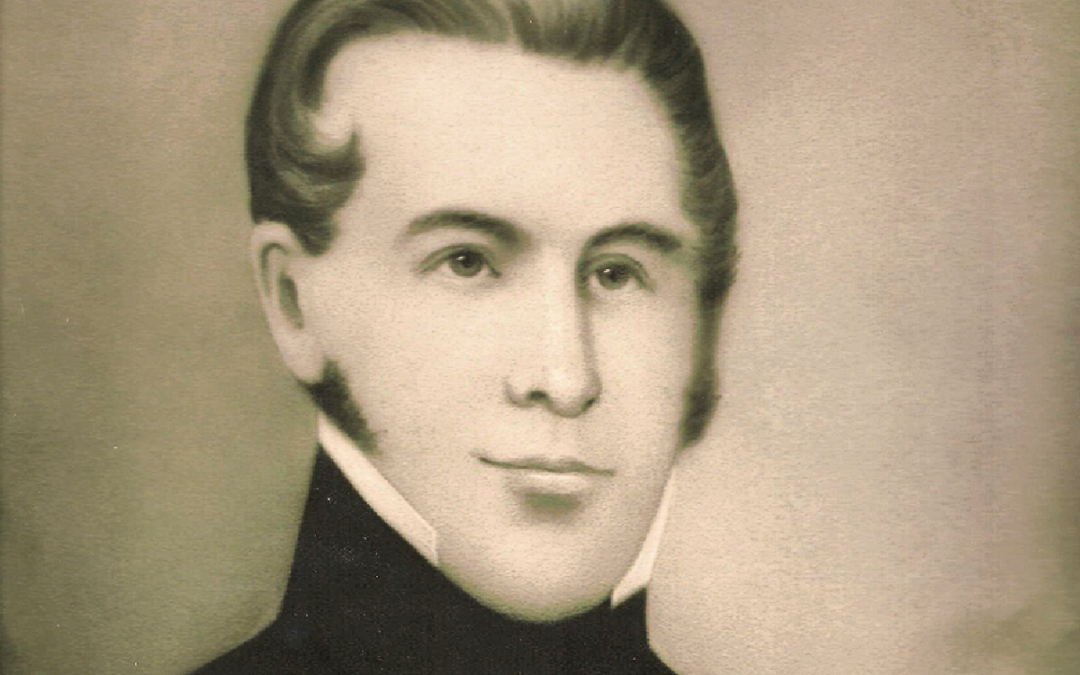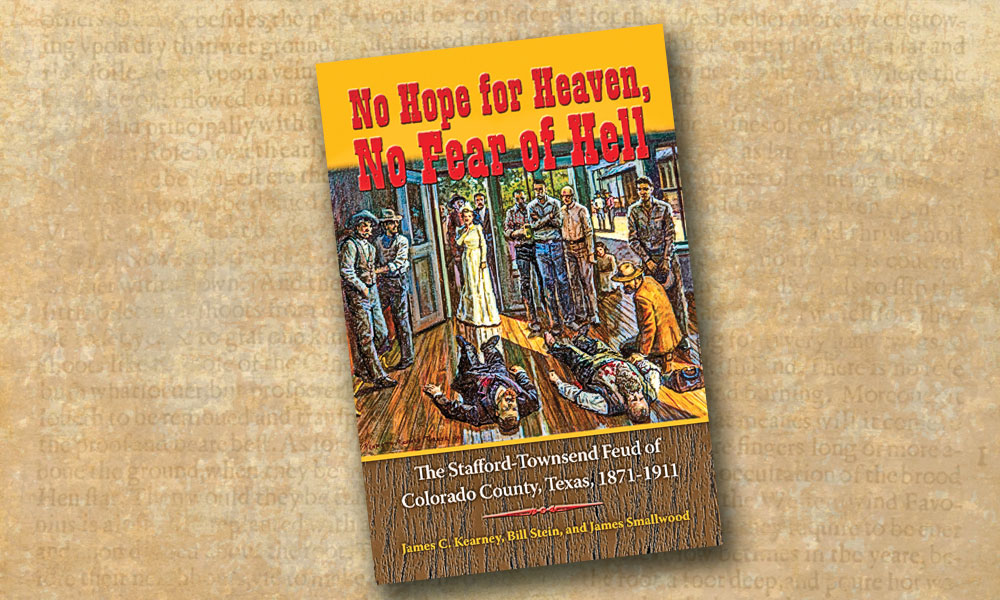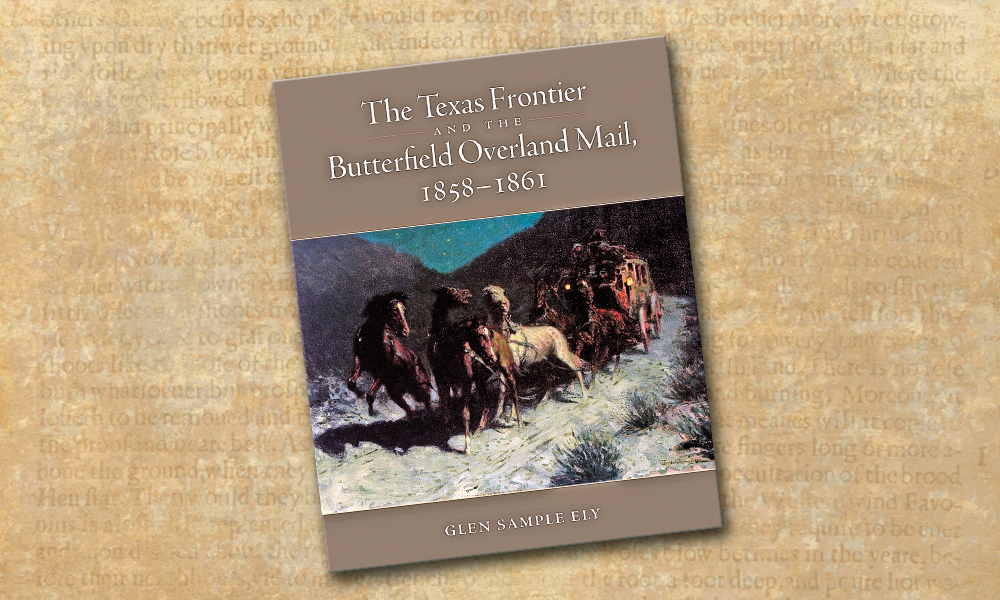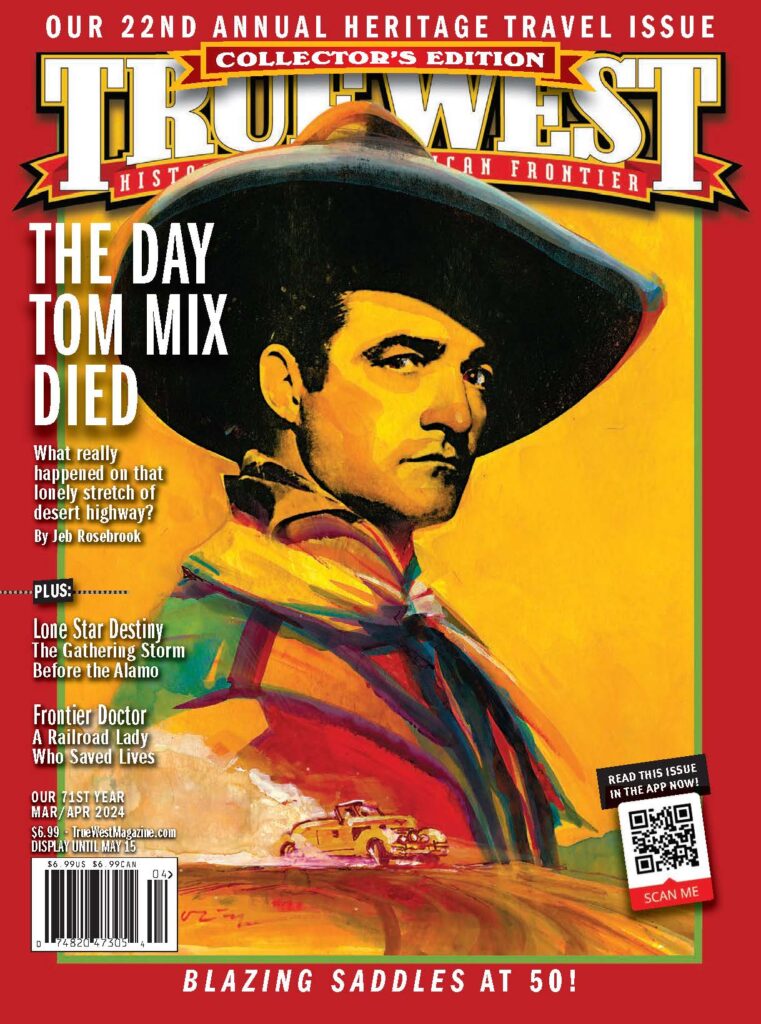Two years before the fateful Battle of the Alamo, the storm clouds—and leaders—of a revolution gathered across Texas.
Things looked up for William Barret Travis in the early months of 1834. The 24-year-old attorney had just set up his law practice in the town of San Felipe in the Mexican state of Coahuila y Tejas, and struggled to get his life in order. South Carolina born, he had left home, wife, son and unborn daughter in Claiborne, Alabama, three years earlier and settled in Anahuac, Texas. He soon ran afoul of Mexican authorities there, involving himself in incidents that led to armed conflicts, later known as the Anahuac disturbances. Censured by cooler heads among settlers, he found it expedient to relocate to San Felipe.
Now, he received good news. His estranged wife agreed to send him his five-year-old son, Charles Edward, to raise. He wasted no time arranging for an adult to bring the boy from Alabama.
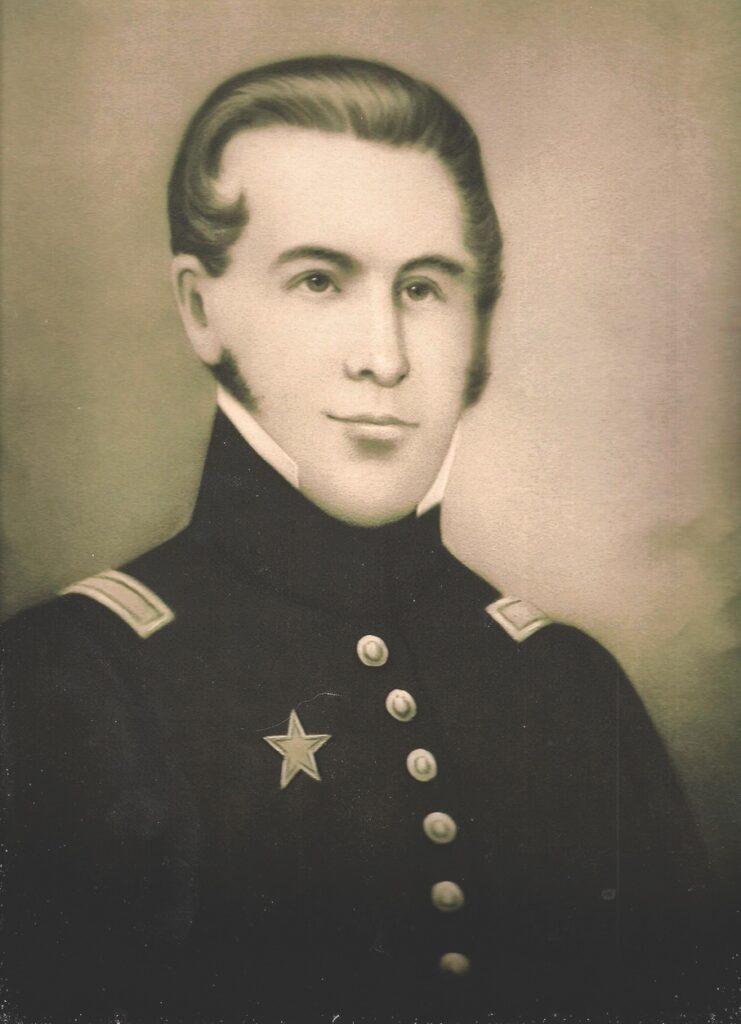
He also learned of the repeal of the Mexican Law of the sixth of April 1830, which restricted immigration to Texas from the United States, but encouraged it from the interior of Mexico and Europe. Because he’d arrived in the Tejas (Texas) portion of Coahuila y Tejas in 1831, the law’s repeal provided him retroactive legality.
Travis’s law practice and personal life flourished. He kept a diary, recording nearly every activity. The existing portion, August 30, 1833 to June 26, 1834, reveals his devotion to detail. He recorded legal transactions, who he represented or opposed, including James Bowie and Stephen F. Austin. In addition, he kept track of his travels to and from San Felipe, some trips for business and others romantic. He documented purchases and sales; livestock, property, food, clothing, even down to a pair of socks. Some involved human beings, for others and himself. On Thursday, February 13, he recorded writing a bond for a J.W. Moore to the local sheriff, “indemnifying him to buy one Boy [sic] Joe belonging to Mansfield.”
He spent time gambling, with winnings and losses listed in the diary. He also read, favoring heroic stories such as Jane Porter’s The Scottish Chiefs about William Wallace, and Sir Walter Scott’s Rob Roy.
Kind and generous, in May Travis paid $1 for a pair of shoes for the child of Johnathan C. Peyton. Peyton had died that month. In June he bought two books of J.B. Miller and sent them to the daughters of Dr. Pleasant W. Rose. In that same month he loaned a Padre Jaén $2, borrowed a cot for the padre to move in with him, and took on the responsibility of his board at another location. Sometimes brutal, Travis whipped “old Jack,” a slave who had committed the sin of getting drunk.
Despite not yet being divorced, Travis entered into a relationship with Rebecca Cummings of Mill Creek. On March 9, he attempted to visit her but found Mill Creek flooded and the surrounding countryside too boggy to continue. “The first time I ever turned back in my life,” he reported in his diary. However, he did not give up and the two exchanged gifts a few days later. He gave Rebecca a breast pin and took a lock of her hair, and she gave him a ring. By the end of April, he made plans to marry Rebecca as soon as his divorce became final.
Travis made one historical observation in his diary. He remembered January 8 as the “anniversary of the victory of New Orleans,” which occurred while he was four and a half years old. Stories of Andrew Jackson and his rag-tag army of soldiers, volunteers, frontiersmen, citizens and pirates in their stand against a superior force of the powerful British Army had made a lasting impression upon him.
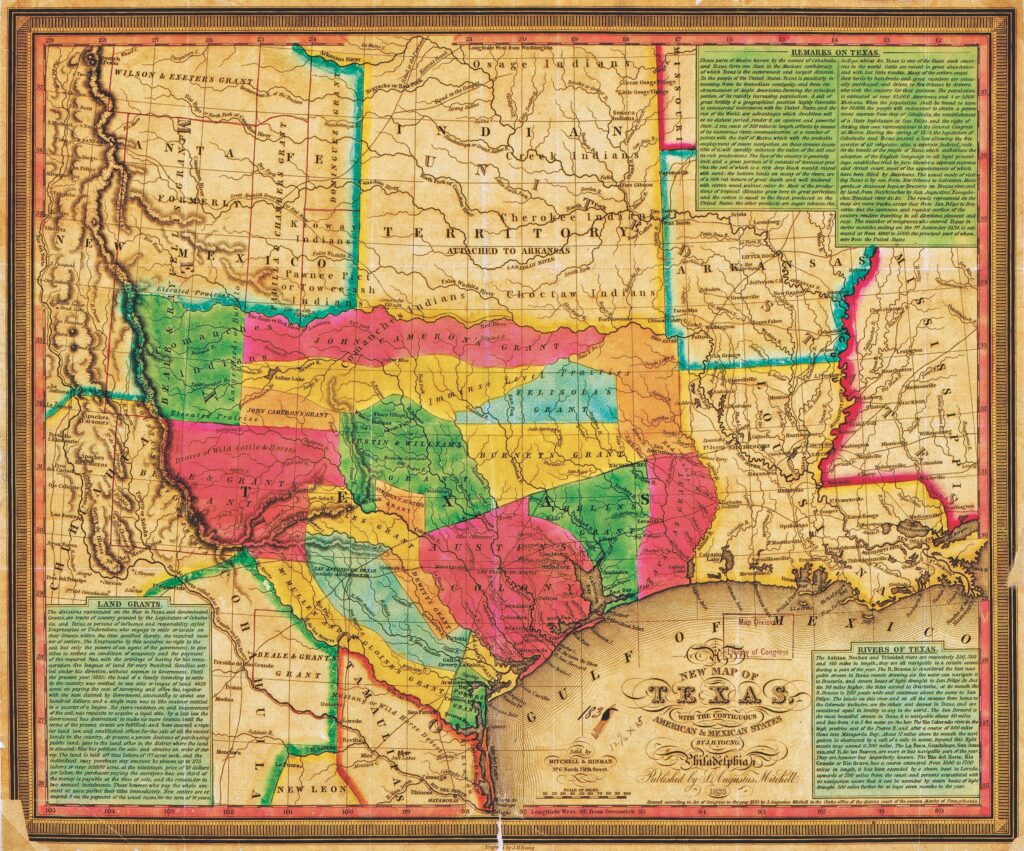
The Legend from Arkansas
There were fewer men more respected on the Southwestern frontier in 1834 than 37-year-old James Bowie. Seven years earlier, on the Vidalia Sandbar in the Mississippi River, he established his reputation as a dangerous man. A duel between Samuel L. Wells III and Dr. Thomas H. Maddox ended with neither injured and their honors intact. However, the affair devolved into a brawl between supporters of the duelists, including Bowie, aligned with Wells. Bowie took action, after being shot in the hip, by drawing a knife and charging into the fray. Despite being pistol-whipped over the head and stabbed in the chest with a cane sword, he dispatched his opponent with a knife thrust.
Bowie survived and always afterwards carried a large knife, which he may or may not have designed himself, but bearing his name. The “Bowie Knife” became the preferred hand weapon of the frontier.
Bowie became a Mexican citizen in Texas in 1830, when he entered in land-speculation business dealings with Juan Martin Veramendi, the vice-governor of Coahuila y Tejas. The following year he solidified his relationship with the powerful and wealthy Veramendi by marrying his 19-year-old daughter Ursula.
Marriage did not settle down Bowie. In 1831 he obtained permission from the Mexican government to enter Indian territory in search of a famed silver mine near the Santa Cruz San Sabá Mission west of San Antonio. His father-in-law and partner financed the expedition. Bowie set out with his brother Rezin (Reason) and nine companions in November. A large party of hostile Caddo Indians interrupted their search, and Bowie’s party took cover in a grove of trees. Negotiations failed and in the ensuing battle the treasure hunters stood off the Indians, inflicting a reported 40 to 50 men killed and 35 wounded. Bowie’s party lost one man killed and three wounded.
Rezin later published an account of the fight which only enhanced brother Jim’s reputation. For Jim Bowie, the lesson of a small group of determined men fighting off a much larger force could not have been lost on him.
In September 1833, Bowie’s wife and in-laws died of cholera in Monclova. Historians still debate if one or two Bowie children may have died. Bowie, near death himself of yellow fever in Natchez, Mississippi, did not hear of his family’s deaths until November.
He returned to San Antonio in March 1834, and then lost himself on a “long hunt,” probably more in search of land than game, but could not escape his fame. Friend William Lacy later stated, “He was like Barnum’s show. Wherever he went everybody wanted to see him.”
After a period of grief, he got down to business again, much needed after the passing of Veramendi, and that business was land.
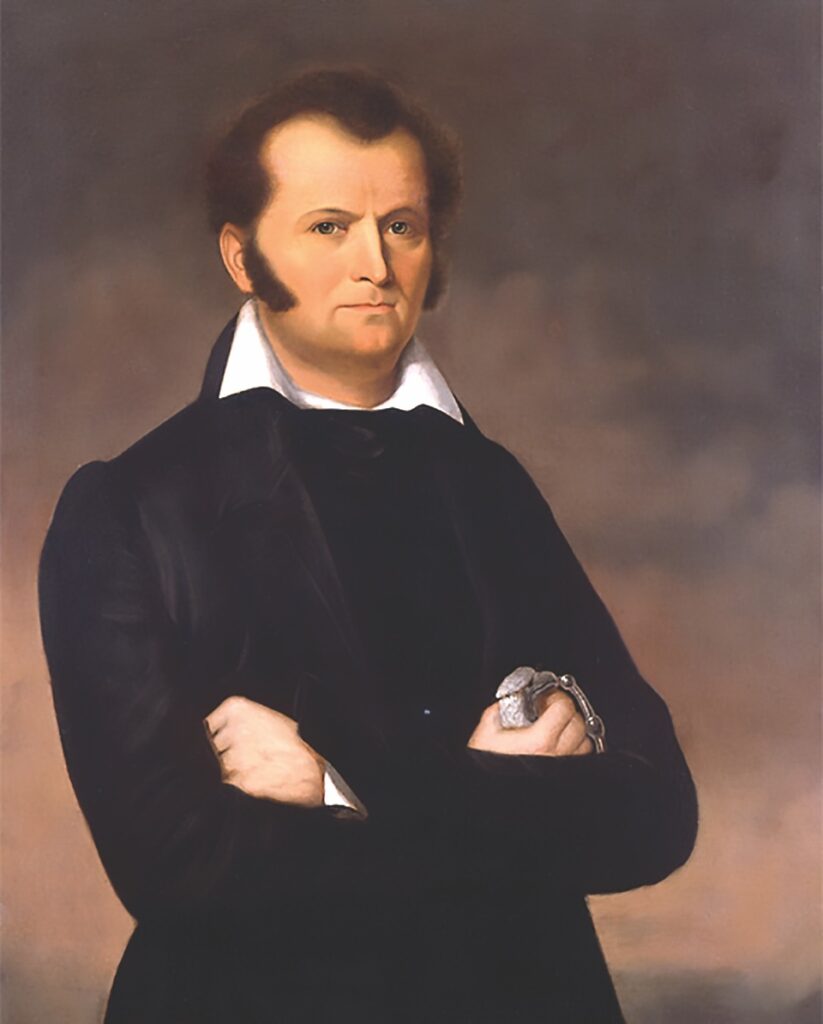
The Man from Tennessee
Forty-seven-year-old David Crockett, popularly known as “Davy” throughout his life and afterward, served in the middle of his third term as a United States Congressman from Tennessee in 1834. He had never adjusted to his duties in Wahington City since first elected in 1827, serving in the 20th and 21st Congresses, defeated in the 22nd, but regaining his seat in the 23rd. He naively believed that he went to Congress to represent the people from his district, while President Andrew Jackson, also from Tennessee, believed he should fall in lockstep behind him along with the rest of the state’s delegation. He battled the President on every front, in 1834 the main issue being Jackson’s desire to remove funds from the Bank of United States. Crockett opposed him as he did on every issue.
He used descriptive terms for the President: “the government of one man,” “King Andrew the First” and “A greater tyrant than Cromwell Ceasar or Bonepart [sic].” It did not make for a peaceful legislative session.
Besides his official duties, Crockett dealt with a number of distractions, mostly involving his emergence as a celebrity. Since his entry into national politics, newspapers found the “Gentleman from Cane,” to be good copy; a hero in the National Democratic press when still aligned with Jackson, and a buffoon in the anti-Jackson papers. These perceptions reversed after he split with the Jackson camp and joined the newly formed Whig party.
A stage play, The Lion of the West, by James Kirke Paulding with a character, “Nimrod Wildfire,” based on Crockett in 1831, and a book, Life and Adventures of Colonel David Crockett of West Tennessee by James Strange French, brought him further into the public’s eye.
The latter proved irksome to Crockett since he found it less than factual, and more so since someone else made money from his life’s story. He resolved to do something about that, and in early 1834 made arrangements with a publishing firm, Carey and Hart of Philadelphia, for his own autobiography. With the help of Congressman Thomas Chilton of Kentucky, he sent a manuscript to the publishers by early February. Along with the manuscript he included many requests of a novice author, specifying print size, page count and stressing no corrections for spelling and grammar. He also wanted 10 copies as soon as possible.
In the midst of these heady times came a letter from “two citizens” from Lowndes County, Mississippi, seeking permission to put his name before the people as a candidate for the U.S. Presidency. He answered with a self-deprecating letter, but still wrote, “If you think you can run me as President, just go-ahead. I had a little rather not; but you talk so pretty I cannot refuse.”
Besides the concerns of his book, and possibly running for President, Crockett prepared for a tour of Northeastern states arranged by the Whigs, which he undertook in late April. Earlier in the year he had written to his oldest son, John Wesley, about both the proposed trip and his book, planning to “never go home until I am able to pay my debts.” Anxious to go, he left Washington before the official end of the Congressional session, to which he looked forward as a “convict from a penatintiary [sic].”
For political purposes he delivered variations of an anti-Jackson speech in Philadelphia, New York City, New Jersey, Boston and Lowell, Massachusetts. For his purposes he basked in celebrity, collected gifts, and publicized his new book. He enjoyed all aspects of his trip, but one experience stood out, his visit to Bunker Hill where 59 years earlier Continental troops faced a superior British force until driven from their position.
“We then went up to the old battle-
ground on Bunker’s hill [sic], where they are erecting a monument to those who fell in that daybreak battle of our rising glory. I felt as if I wanted to call them up, and ask them to tell me how to help to protect the liberty they bought for us with their blood; but as I could not do so, I resolved, on that holy ground, as I had done elsewhere, to go for my country, always and everywhere.”
For the rest of the year, Crockett harangued his publishers concerning his book, requesting information, sending friends to stop by their office and check on the progress, arranging for boxes of books to be sent places where he could bring them home to Tennessee, and for money.
His financial situation had become desperate. Never avaricious, he wrote to Nicholas Biddle that “[P]overty is no crime but it is attended with many inconveniences.” He told Carey and Harte, “I can never need money worse that at the present,” as he laid out plans for another book, based on his trip to the north and east.
If Andrew Jackson presented Crockett with political problems, Martin Van Buren, Jackson’s vice president and chosen successor, made him apoplectic. As with the president, he had some pet names for Van Buren—“the little political Judeas [sic]” and “a perfect scoundrel”—and stated he would prefer voting “for the devil against Van.”
By December Crockett went on record several times writing to his son John and others that if Van Buren was elected to the presidency he would leave the United States before submitting to his government. He had already chosen a destination. He would, “go to the wildes [sic] of Texes [sic].” Why? “I do believe Santa Ana’s [sic] Kingdom will be a paradise, compared with this, in a few years.”
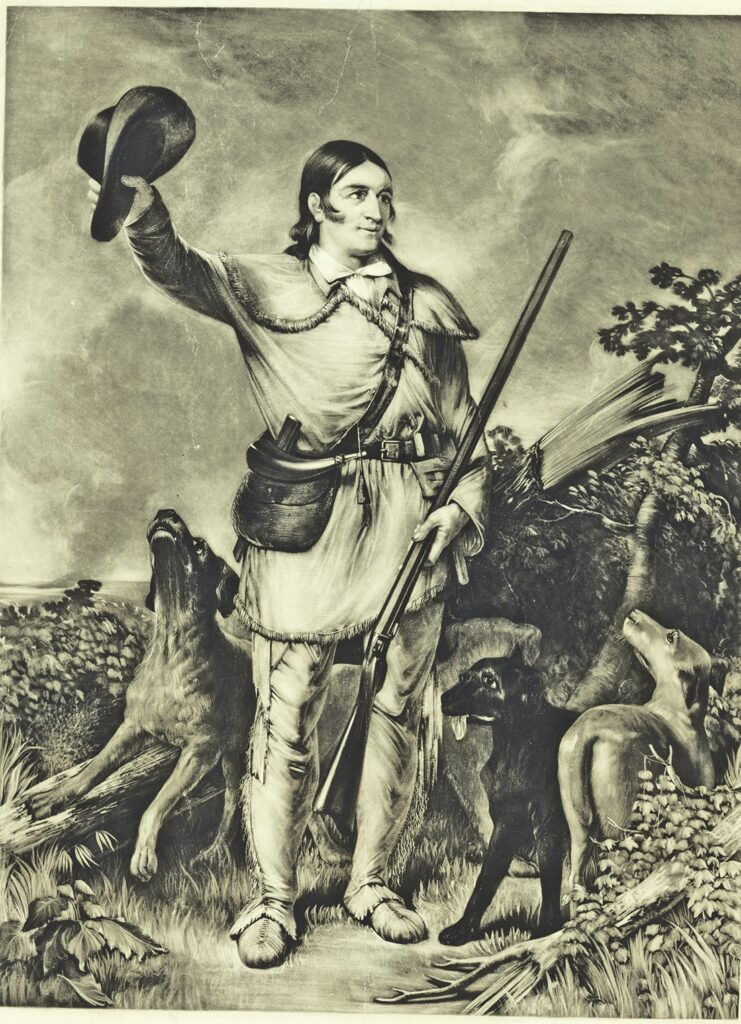
The Raven
Sam Houston had lived a full life by the time he involved himself in Texas affairs. Virginia born and Tennessee raised, he had been promoted to an officer from the ranks in the United States Army, receiving three severe wounds at the 1814 Battle of Horseshoe Bend against the Creek Indians. As a protégé of Andrew Jackson, he served as a two-term Congressman from Tennessee, and later as Governor of the state. When his marriage failed in 1829, he went into self-exile among the Cherokee Indian tribe, in which he had been an adopted member since 1809. After drowning his sorrow in drink and earning the name of “Big Drunk,” he slowly reconnected with his previous life, returning to Tennessee, Washington and New York.
He entered Texas for the first time on December 2, 1832, not settling but traveling through, monitoring the political situation between the Mexican government and settlers, and evaluating the land’s potential.
William B. Travis’s diary recorded Houston’s presence in San Felipe on December 15. By February 13, 1833, Houston wrote to Jackson, with barely controlled excitement, inaccurately describing Mexico as involved in “Civil War [sic]…powerless and penniless,” predicting the transfer of Texas to some power, perhaps Engand, “[I]f the United States doesn’t press for it.” He informed Jackson that Texans would soon form a convention to declare all of the country north of the Rio Grande as “Texas proper, and form a state constitution,” with his expectations at being part of that convention. Lastly, he assured the president, “I may make Texas my abiding place! [but] I will never forget the country of my birth.”
The 40-year-old Houston kept tabs on Texas even at long distance. In February 1834, while in Washington D.C., he received a letter informing him that Texas colonizer Stephen F. Austin had been imprisoned in Mexico for treason. A short time later, in New York City, he declined an offer from James Prentiss, also in New York, seeking to secure his services in Texas land dealings. Houston replied:
“I am not, nor have I ever been engaged, by any land Company, Grantee [sic], or any other person engaged or interested in Texas lands. I have not sought to be engaged, nor am anxious on the subject of being employed as counsel, or agent of any company.”
Then, he went on to specify his monetary requirements if a land company sought his services.

He soon left New York, returning to Washington, only to discover he had left behind a map at the City Hotel. He wrote to Prentiss asking him to secure the map, send it to a Senator Felix Grundy from whom he would retrieve it. “I can’t do without it,” he wrote of the map, very likely that of Texas.
While awaiting its arrival, Houston spent some time with Davy Crockett before the Congress-
man embarked on his Northeast tour, perhaps speaking to him of Texas’ potential. He also invited him to visit writer and socialite Octavia Walton, both adding their names to those of other prominent figures in Walton’s autograph book.
Houston received his much-needed map from Prentiss and wrote to him, “I do think within one year that it [Texas] will be a Sovereign State [sic]… Within three years I think it will be separated from the Mexican confederacy, and will remain so forever.”
On April 25, as Crockett headed northeast, Houston turned southwest and dropped from the record. In December, British travel writer G. W. Featherstonhaugh discovered him at the Travelers Inn, in Washington, Arkansas, an important crossroads from the United States to Texas, 20 miles beyond. He also found there, “[M]any people…from the States…whose real object was to encourage the settlers in Texas to throw off their allegiance to the Mexican Government.” Houston isolated himself during the day and stayed up during the night, perhaps studying his map.

The Founder
No one had a more vested interest in Texas, nor more time to contemplate that interest in 1834 than 40-year-old Stephen Fuller Austin. He had come to Texas in 1821, reluctantly taking over his late father’s role as an Empresario in setting up a colony in the territory. In that he proved successful, working closely with the Spanish and then Mexican governments to ensure the continuation of his colony and the rights of his colonists. During the December 1826 to January 1827 “Fredonia Rebellion,” in which another Empres-
ario, Haden Edwards, sought to wrest his own colony from Mexico, Austin loyally sided with Mexico to bring the rebellion to an end.
He often traveled to Mexico City to represent the concerns of his people to the ever-changing Mexican governments. He went once again in July 1833 to petition the government for his colony’s latest concern, granting Texas statehood from the larger Coahuila y Tejas. He had some success, as in the repeal of the Law of April 1830, but not with the question of statehood. Texas had not the required population to justify its separation from Coahuila.
Frustrated, Austin wrote a letter on October 2 to the governing body in San Antonio de Béxar urging them to begin laying out plans for a separate state government. Either Mexican officials intercepted this message, or those in San Antonio made it known to them.
Austin left Mexico City on December 10 but never made it home. Mexican authorities arrested him in Saltillo in January 1834 for the charge of citing an insurrection and sent him back to Mexico City, incarcerating him in the Spanish Inquisition prison.
He suffered in solitary confinement with poor food for months, his only visitors Irish priest Father Michael Muldoon, and his legal counsel, who changed several times. In May, officials freed him from solitary and allowed him into the prison’s general population. On December 25 he received the Christmas gift of limited freedom, released from the prison but confined to the Federal District of the Mexican capital.
As 1834 came to a close, Austin, Bowie, Crockett, Houston and Travis contemplated their futures, with Texas the common denominator in those futures.
Former New York City Fire Department Capt. William Groneman, a sustaining member of Western Writers of America, writes about the Alamo, Davy Crockett, John Steinbeck, and the FDNY. His latest book, a novel, is The Minstrel Boy.

